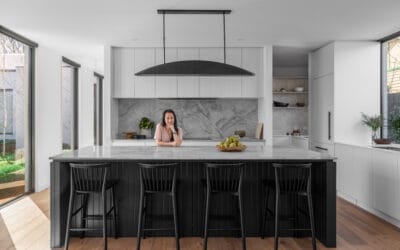Next in our journey through each of the Building Methods – Design Team and Tender!
Revisit last weeks podcast to find out more about how Elise Weaver navigated her build using the Owner-Builder Method, and make sure to listen in to Rebeka’s introduction to all of the different Building Methods, and how they could work for you!
A Serendipitous Discovery
Barbara’s journey with this home began when she and her family stumbled upon a property in Ivanhoe, Victoria, in 2020. While not initially planning a renovation, Barbara saw potential in the property. The existing structure had great bones, and the spacious lot offered room for expansion whilst still maintaining a great garden. The key was to create a comfortable family home with a focus on single-story living, ideal for their growing family. Barbara already had two young boys and the home would be completed in time to welcome a third baby!
Barbara works in commercial construction so, drawing on her professional experience, Barbara choose to take the build pathway of managing the design team, tendering the project and engaging a builder to complete the works.
Engaging the Design Team
To turn their vision into reality, Barbara and her husband engaged a design team. They decided to include interior design services to ensure the project’s comprehensive documentation and minimise potential gaps or ambiguities. Having a fully documented project was crucial in mitigating risks and streamlining the tender process. Before drafting the tender documentation, they had ensured they had selected all fixtures, fittings, and finishes which eliminated guesswork or allowances during the bidding stage. It also meant that the tenders could be compared side by side as there were no assumptions which can lead to additional work analysing the tenders.
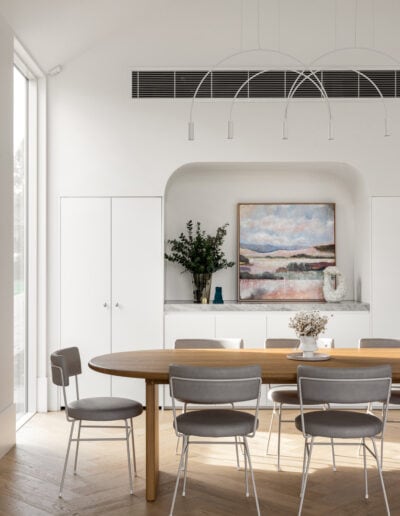

Running a Rigorous Tender Process
Barbara’s professional experience taught her the importance of a meticulous tender process, and she set out with this in mind throughout the entire process. They pre-vetted and pre-selected the builders, ensuring they were happy with the quality of their workmanship and that the builder would have time to complete the job.
They then sent the tender documentation and set a four-week timeframe for builders to submit their tenders. The documentation pack provided to builders included complete construction documentation including soil reports, engineering, energy reports, interior schedules, fixtures, and fittings, along with a detailed brief.
Any ambiguities in the documentation were addressed in the brief, ensuring that the builders provided accurate and competitive quotes and which also provided an opportunity to pick up any cost savings along the way if the builders chose to identify them.
This way of running a tender process with all the information, in a set time to a limited number of builders, addressing queries with RFI’s as they come up is commonplace in commercial construction, but is often overlooked and not administered correctly in residential construction. It is the correct way to run a competitive tender and should ensure that you have a clarity when you receive the tenders back.
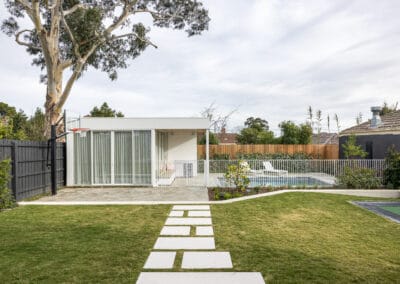
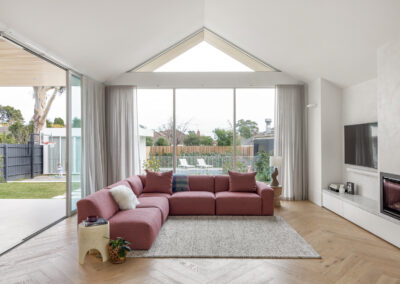
Comparing Apples to Apples
Barbara created a spreadsheet to allow easy comparison of the tenders once they were received. The spreadsheet she used included a trade breakdown schedule with value management details. This approach allowed her to compare builders tender prices and value management prospects and determine the most cost-effective options. By aligning the scope and providing clear information, Barbara maintained a level playing field among the builders. We have also found that when you run a clean tender you are putting yourself in the position of being an ideal client – one who is clear and direct and who a builder would want to work with. Note: You can find a copy of a tender comparison spreadsheet in the BuildHer course.
Interviewing Builders
Preparation is important and to ensure they worked with the most suitable builders, Barbara and her husband researched previous projects, references, and capabilities. They assessed whether the builders could effectively handle the existing conditions and adapt to their vision from the outset so only builders that they would be happy with were on the tender list. Key to their decision making process was the ability to coordinate the renovation with the original Art Deco home and seamlessly integrate modern elements of the extension. Some builders only look to undertake new builds, while other builders only like renovations – ensuring a good project fit maximises your value.
Efficient Timeline
The entire design and documentation phase, including engaging the design team, took approximately six months. During this period, they engaged builders, with the expectation that they could start the project soon after settlement. Barbara worked concurrently throughout the settlement period by getting early access to survey the land and existing house and get soil samples, while they were finalizing the design documentation they were also interviewing and assessing builders so that when they were ready to go to tender they had already selected and vetted their builders. This approach ensured that their project stayed on track and didn’t waste time with avoidable delays. Good project management will see that tasks are undertaken in the right order, but also overlapping where possible and practical.
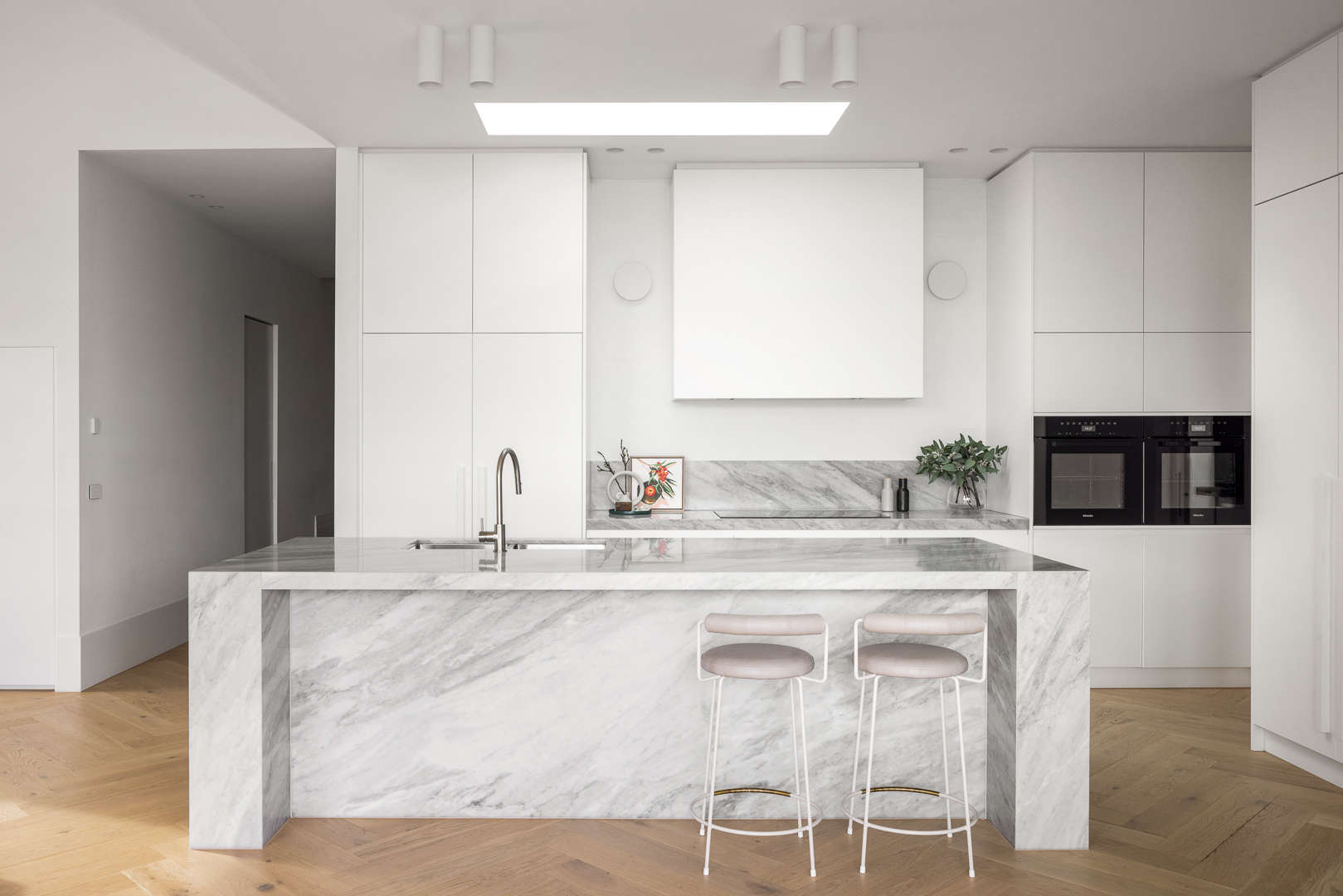
Communication Is Key
Barbara made sure to maintain clear communication with builders. Page-turn interviews were conducted to ensure alignment on design details, ensuring that there were no conflicting elements in the quotes. Any variances or exclusions were addressed, preventing costly surprises later in the project.
Thanks to their comprehensive documentation and clear communication, Barbara’s project ended with minimal variations. The only significant change was in the landscaping, which had been excluded from the builders tender price. However, Barbara had made an allowance for it in her tender spreadsheet so had already accounted for this additional cost.
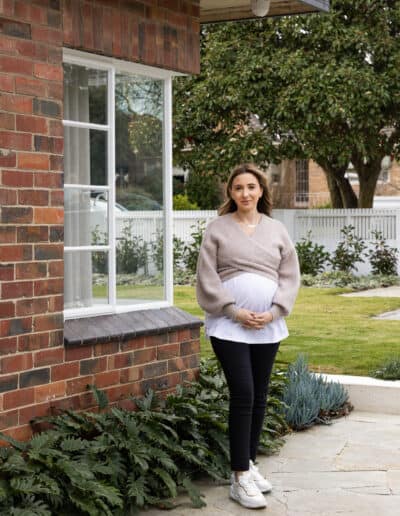
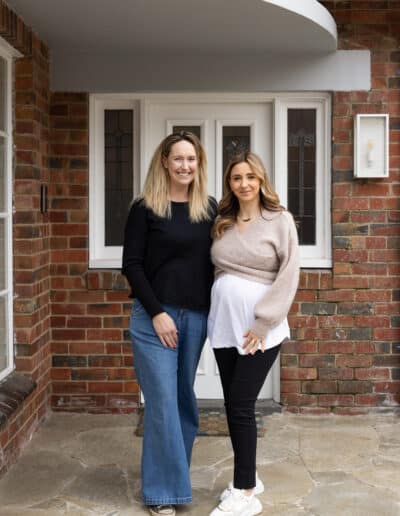
Designing a house, and creating a home
Barbara’s favorite aspect of the house is the abundant natural light in her home. The bright and airy atmosphere perfectly complements the family’s lifestyle and design preferences, setting out to create an extension that was light and bright in contrast but also complementary to the original Art Deco building.
Barbara’s home-building experience was a smooth and successful for all of the parties involved, the meticulous groundwork they laid with the design and documentation significantly contributed to the favorable outcome. By conducting extensive research, maintaining clear communication, and leaving minimal room for ambiguities, Barbara managed to navigate the home-building process with exceptional professionalism, which often we find is reserved for many peoples workplaces, but does not extend to what could be considered more important, the building of their biggest assets, their homes.
Imagine if all builds were so well planned, had clear communication, and professional rigor and if more of the commercial construction principles of managing costs and controlling risks were translated into residential home building. If this is the process that appeals to you then Barbara’s approach is certainly one to emulate.
Barbara is also our podcast guest this week! Tune in as she takes us on a journey through her expertise in design and tender management. Don’t miss out on the opportunity to gain insights from her experience and learn how attention to detail in both design and tendering can make all the difference in a successful home-building project. To listen, click HERE!






